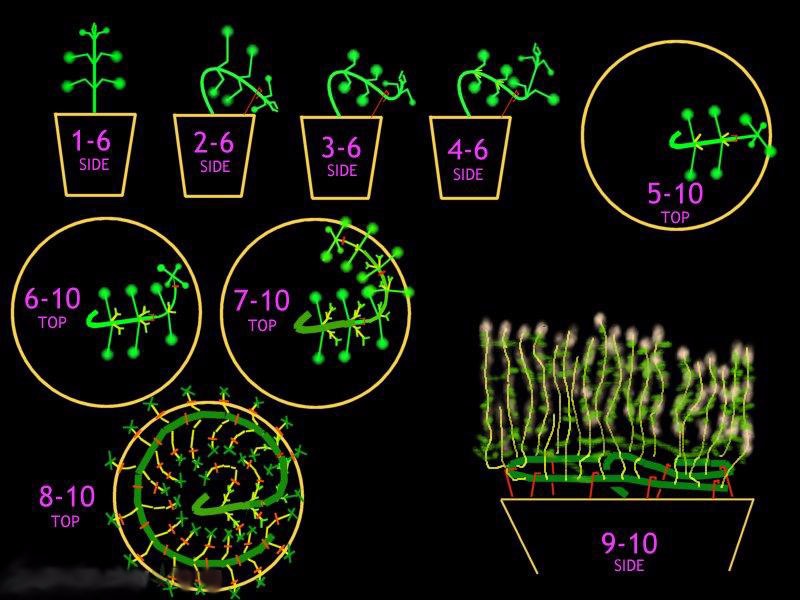Low Stress Training (LST) Method
LST, or Low Stress Training, is a plant training technique used alongside methods like SoG (Sea of Green) or SCRoG (Screen of Green). As the name suggests, LST is a gentle, low-impact approach to training plants.
Why Train Cannabis Plants?
By trimming, pinching, or bending branches, growers can redistribute growth hormones (auxins) within the plant. Trimming is considered a more aggressive and radical method compared to LST. Removing or bending shoots or just the tops should only be done to address specific gardening goals. By influencing the plant’s hormonal balance, we help redistribute phytohormones, signaling the plant to send auxins to the lower branches. It’s best to start these manipulations at the very beginning of the flowering stage.
The stronger the signal, the more significant the redistribution of growth hormones. As mentioned, trimming causes more stress, while bending is perceived as a gentler intervention. Therefore, the concentration of phytohormones changes less, and cannabis plants tolerate these manipulations easily. By combining both methods—bending and trimming—you can effectively control plant height and increase productivity.
Note: Only young, actively growing branches should be trained, as developing tissues contain the highest levels of growth hormones.
Key Points of Training
- Training is not just for height control.
- Flowering plants can also be trained.
- All types of cannabis can be trained, though some may respond less favorably.
Based on these three rules, you can choose between LST and HST (High Stress Training). HST involves more aggressive bending or even physical damage, while LST is all about gentle handling. With the right technique, you can train your plant to meet specific needs: keep it small, create multiple main colas instead of one, improve quality or yield, and more. LST is especially effective for increasing yields from autoflowering cannabis strains.
Principles and Techniques of LST
Like most plants, cannabis exhibits apical dominance, meaning it prioritizes growth at the top. This means the plant directs most of its energy toward stretching the main stem toward the light, making the central cola the largest. As a result, the lower branches grow and branch out more slowly. By arranging your lights properly, you can ensure all parts of the plant receive equal light, promoting more even development. (See also: “Cannabis Lighting.”)
The key to LST is disrupting the main source of auxin (the growth hormone) and creating conditions where the bent plant develops its secondary parts (such as lower branches). A deformed plant will start sending growth signals to the lower branches, which will then reach for the light. By twisting and bending the stem, you can significantly increase the number of growth points. When you bend the tops of branches using LST, you trigger a response that encourages side branches to grow, making the plant bushier and causing the tops to multiply.



